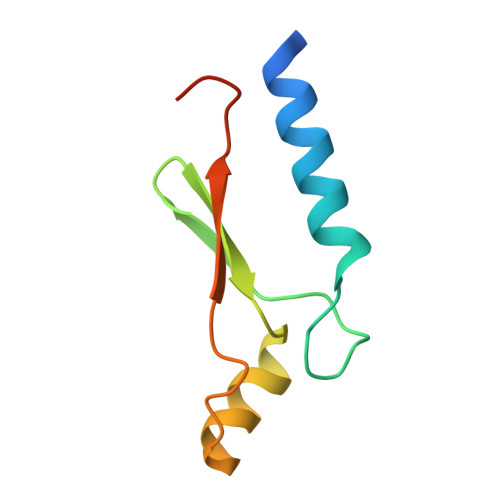Structural insights into the evolution of a non-biological protein: importance of surface residues in protein fold optimization.
Smith, M.D., Rosenow, M.A., Wang, M., Allen, J.P., Szostak, J.W., Chaput, J.C.(2007) PLoS One 2: e467-e467
- PubMed: 17520026
- DOI: https://doi.org/10.1371/journal.pone.0000467
- Primary Citation of Related Structures:
2P05, 2P09 - PubMed Abstract:
Phylogenetic profiling of amino acid substitution patterns in proteins has led many to conclude that most structural information is carried by interior core residues that are solvent inaccessible. This conclusion is based on the observation that buried residues generally tolerate only conserved sequence changes, while surface residues allow more diverse chemical substitutions. This notion is now changing as it has become apparent that both core and surface residues play important roles in protein folding and stability. Unfortunately, the ability to identify specific mutations that will lead to enhanced stability remains a challenging problem. Here we discuss two mutations that emerged from an in vitro selection experiment designed to improve the folding stability of a non-biological ATP binding protein. These mutations alter two solvent accessible residues, and dramatically enhance the expression, solubility, thermal stability, and ligand binding affinity of the protein. The significance of both mutations was investigated individually and together, and the X-ray crystal structures of the parent sequence and double mutant protein were solved to a resolution limit of 2.8 and 1.65 A, respectively. Comparative structural analysis of the evolved protein to proteins found in nature reveals that our non-biological protein evolved certain structural features shared by many thermophilic proteins. This experimental result suggests that protein fold optimization by in vitro selection offers a viable approach to generating stable variants of many naturally occurring proteins whose structures and functions are otherwise difficult to study.
Organizational Affiliation:
Center for BioOptical Nanotechnology, The Biodesign Institute, Arizona State University, Tempe, Arizona, United States of America.


















